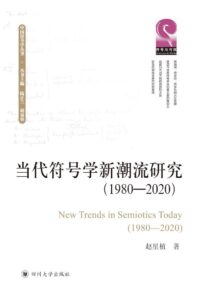
Zhao Xingzhi
Sichuan University Press, 2021
About the book: This book focuses on the new trends in semiotics after post-structuralism and deconstructionism in the recent forty years (1980-2020). The author emphasizes that the essence of “new semiotics” today is not the creation of new theoretical models—the classical ones remain their validity—but the integration and symbiosis between theories and theories, between schools and schools. This cross-regional, cross-school, and cross-disciplinary theoretical development forms the major driving force of the semiotic movement today. Various schools and doctrines that have been derived from this movement are named as the “new trends in semiotics” in this book.
Based on a large amount of first-hand materials, this book analyzes the development of the newly emerging semiotic schools in the word today, and then traces the standpoints, ends as well as methodologies in the process of theoretical integration. This book also pays special attention to the Chinese semiotic school and its connectedness to new semiotic movement. China has a long history of semiotic thinking. It can be dated back as early as the so-called Pre-Qin Period (8th-3rd centuries BC), when Mingxue 名学 (the study of naming), flourished. And I-Ching易经 (or The Book of Changes) is regarded as the first semiotic book in the world. Chinese semioticians revisit and reinterpret those traditional Chinese semiotic thoughts, and then reintegrate them into today’s semiotic theoretical system.
About the author: Zhao Xingzhi is currently an associate professor in the Department of English at Sichuan University, and a HYI visiting scholar in Linguist and Semiotic Training Program (2021-2022). He also serves as the executive editor-in-chief of Signs & Media, the bilingual semiotic journal in China. His research interests include Peircean semiotics, semiotic anthropology of gift-giving, semiosis in digital media and history of Chinese semiotic movement.
